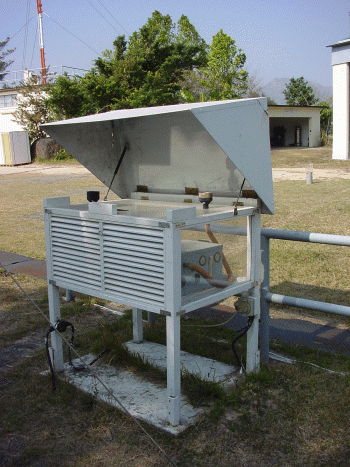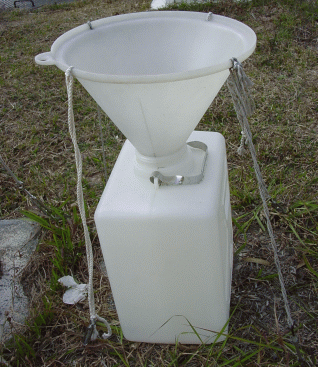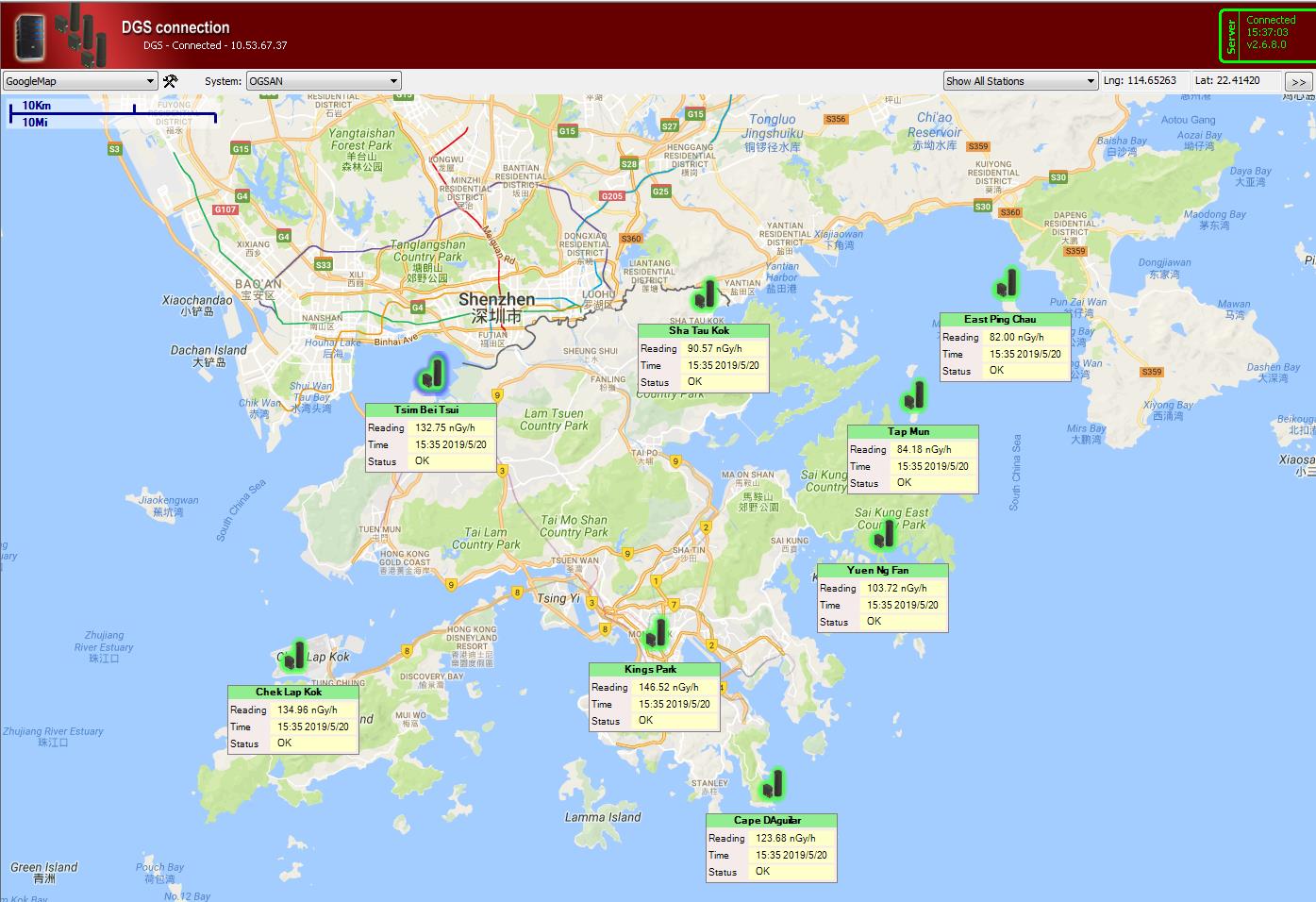Radiation Monitoring Network
A radiation monitoring network consisting of 12 fixed radiation monitoring stations has been set up to monitor the ambient gamma dose rate in Hong Kong. A high pressure ionization chamber installed at each station transmits gamma dose rate data to the Observatory Headquarters via independent communication networks. An alarm at the Observatory Headquarters will sound when the radiation level at any one station exceeds pre-set criteria. The station closest to Daya Bay is located at Ping Chau in Mirs Bay about 12 km to the southwest of the nuclear power stations.

Locations of the radiation monitoring stations
Radiation Monitoring Station
Each monitoring station consists of a high pressure ionization chamber (HPIC), a radio-iodine sampler, a high volume air sampler and a total deposition collector. In addition, an enhanced high volume air sampler is also installed at King’s Park radiation monitoring station. They are to measure ambient gamma dose rate, collect radio-iodine, airborne particulate and deposition samples respectively. In normal situation, one radio-iodine sampler in King’s Park and three high volume air samplers respectively at King’s Park, Sha Tau Kok and Yuen Ng Fan are operated continuously to collect weekly samples. All other radio-iodine samplers and high volume air samplers are set at standby mode.
Ambient gamma dose rate is measured continuously by a sensor consisting of a HPIC and the associated electrometer. The one-minute mean gamma dose rate readings are then telemetered every minute to the central station at the HKO Headquarters.
The standby radio-iodine samplers and high volume air samplers, as well as the enhanced high volume air sampler at King’s Park will be switched on when needed. In particular, the amount of air samples collected by the enhanced high volume sampler can be significantly increased to shorten the measuring time effectively. All the airborne particulate and radio-iodine samples, together with deposition samples, will be collected for analysis at the King's Park Radiation Laboratory.

Instruments at radiation monitoring station
High Pressure Ionization Chamber
The pressurized gas inside an HPIC is constantly being ionized by direct gamma radiation from the environment. The electrical current thus produced tells us what the gamma radiation level is. The HPIC is a very sensitive instrument and can detect small changes in radiation level.

High Pressure Ionization Chamber
Radio-iodine Sampler
This sampler is put inside a weatherproof housing and is used to collect gaseous iodine in air at twelve locations in Hong Kong. It consists of a filter holder and an air pump. Air is drawn through the filters in the filter holder, which houses a special cartridge to trap the gaseous iodine in air. Radioactivity measurements of the collected samples are carried out at the Radiation Laboratory at King's Park.

Radio-iodine Sampler
High Volume Air Sampler (HVAS) and Enhanced High Volume Air Sampler (EHVAS)
The HVAS is installed at twelve locations in Hong Kong to collect airborne particulate. It consists of a high volume air pump and a filter holder. It has a weatherproof shelter constructed of reinforced aluminium. Air is drawn by the air pump through a filter paper to trap airborne particulates larger than 0.02 mm in size. Radioactivity measurements of the collected samples are carried out at the King's Park Radiation Laboratory.
In addition, an enhanced high volume air sampler is also installed at King’s Park radiation monitoring station.

High Volume Air Sampler (HVAS)

Enhanced High Volume Air Sampler (HVAS) in the King’s Park radiation monitoring station
Total Deposition Collector
The total deposition collector is used for collecting airborne materials that are either deposited onto the ground or washed down by rain water. It consists of a 20-litre plastic bottle and a plastic funnel. While wet deposition is collected together with rainwater, dry deposition is collected by rinsing the inner surface of the funnel with distilled water. Radioactivity measurements of the collected samples are carried out at the Radiation Laboratory at King's Park.

Total Deposition Collector
Online Gamma Spectroscopic Analyser Network
The Observatory has established the online gamma spectroscopic analyzer network with outdoor gamma spectroscopic analyzers installed in eight designated radiation monitoring stations. The network started trial operation in 2017. The gamma spectroscopic analyzer, utilizes sodium iodide (NaI) detector for monitoring the ambient gamma-emitting radionuclides in real time. The measured spectral data will facilitate early identification of abnormal presence of artificial gamma-emitting radionuclides, if any, in the environment, thus further enhancing the capability of emergency response and consequence assessment.
Gamma spectroscopic analyzer installed at King’s Park

Gamma spectroscopic analyzers installed in eight designated radiation monitoring stations